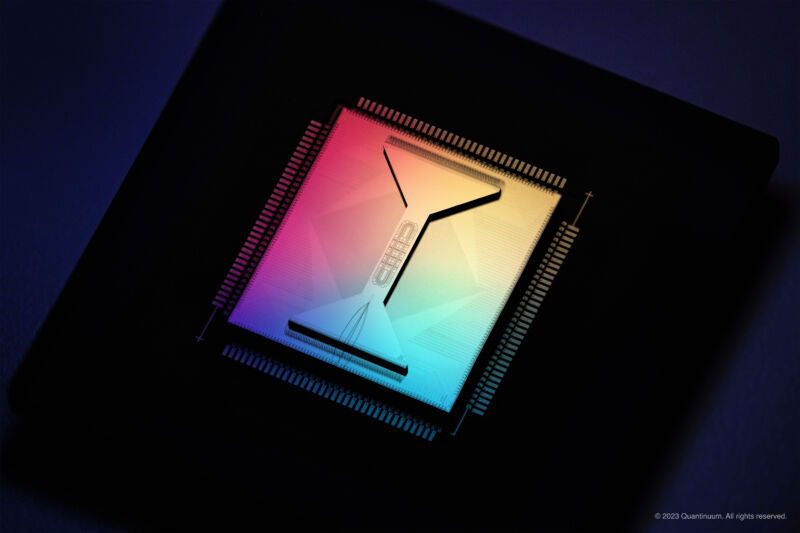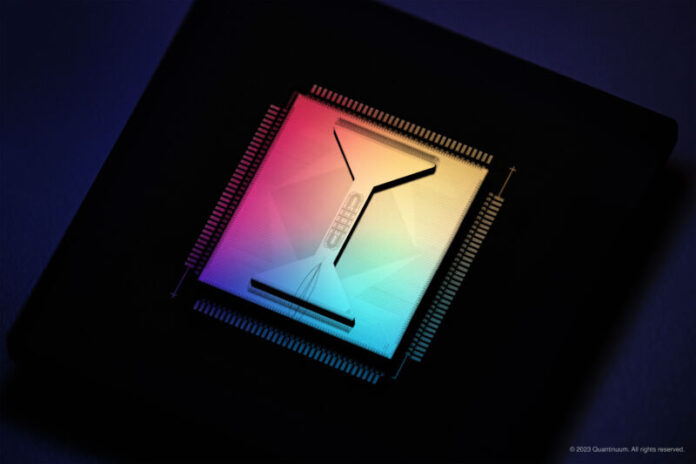
Enlarge / Quantinuum's H2 "racetrack" quantum processor. (credit: Quantinuum)
On Tuesday, Microsoft made a series of announcements related to its Azure Quantum Cloud service. Among them was a demonstration of logical operations using the largest number of error-corrected qubits yet.
"Since April, we've tripled the number of logical qubits here," said Microsoft Technical Fellow Krysta Svore. "So we are accelerating toward that hundred-logical-qubit capability." The company has also lined up a new partner in the form of Atom Computing, which uses neutral atoms to hold qubits and has already demonstrated hardware with over 1,000 hardware qubits.
Collectively, the announcements are the latest sign that quantum computing has emerged from its infancy and is rapidly progressing toward the development of systems that can reliably perform calculations that would be impractical or impossible to run on classical hardware. We talked with people at Microsoft and some of its hardware partners to get a sense of what's coming next to bring us closer to useful quantum computing.
Read 20 remaining paragraphs | Comments
Ars Technica - All contentContinue reading/original-link]




